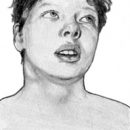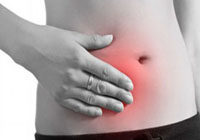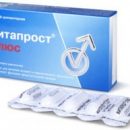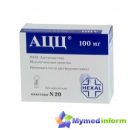Causes of increasing in the size of lymph nodes. Diseases provoking inflammation of lymph nodes. Factors contributing to the development of lymphadenitis.
Content
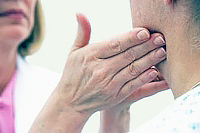 Inflammation of lymph nodes is often accompanied by pain and signals the flow in the body of the pathological process. This phenomenon is usually associated with an infection that affects the body is completely or locally, and can talk about the beginning of many diseases — from angina and aczes to cancer, such as lymphoma or leukemia. When inflammation of lymphatic nodes, urgently consult a doctor to clarify the cause.
Inflammation of lymph nodes is often accompanied by pain and signals the flow in the body of the pathological process. This phenomenon is usually associated with an infection that affects the body is completely or locally, and can talk about the beginning of many diseases — from angina and aczes to cancer, such as lymphoma or leukemia. When inflammation of lymphatic nodes, urgently consult a doctor to clarify the cause.
Lymphousel — This is a peripheral organ of the lymphatic system that performs the role of a biological filter in the body. Inflammation of lymph nodes — Consequence of infectious diseases of viral or bacterial nature. The lymph node system is a barrier to spread the infection pathogens. Inflammation of one lymph node is a protective reaction of the body in response to the penetration of pathogenic microorganism. In the development of an infectious disease, the inflammatory process captures a whole group of nodes (lymphadenitis).
Causes of inflammatory process
If an enlarged node does not hurt and the temperature does not increase, it means that it is more actively functioning. After some time, its size becomes the same. But if inflammation continues to progress, especially in several nodes or a whole group of lymph nodes, you need to urgently consult a doctor.
Doctors allocate several main reasons causing an increase in the size of lymph nodes:
- Local infection (local infection with viruses, bacteria or fungi);
- General infection (affecting the body as a whole — tuberculosis, typhus, rubella, windmill and other.);
- Increased sensitivity of the body on some substances;
- Connective tissue diseases (Systemic Red Volcanka, Arthritis and DR.);
- Oncological diseases, among whom — leukemia, lymphogranulomatosis and lymphoma.
Lymphadenitis is a secondary phenomenon. The root cause lies in the disease that provoked it. For recognition of the disease, a number of laboratory research and diagnostic events are carried out.
Forms of the inflammatory process
Depending on the degree of dissemination of the disease, the inflammation of lymph nodes is:
- Local — One category of nodes is affected (for example, on the neck);
- General — With inflammation of a large number of nodes that are not adjacent to each other.
Acute inflammation
Acute inflammation of lymph nodes can manifest itself in three forms:
- catarrhal (ungounted);
- hemorrhagic (with blood impurities in the hearth);
- purulent.
Catarial form rarely causes a deterioration in the overall state, the foci of inflammation usually do not hurt, and the skin does not blush. Hemorrhagic form can cause pain and increase body temperature. With purulent form of pain intensify, the skin in the focus of infection blues, the nodes themselves become fixed, the general condition is deteriorating: the body temperature increases, headaches appear and weakness.
A sharp inflammatory process is usually accompanied by a number of symptoms:
- an increase in the size of lymph nodes;
- temperature increase;
- pain;
- general malaise and headache;
- Redness of the skin in the area of lymph nodes and a sharp rise in body temperature with chills means the beginning of the purulent process.
Chronic inflammation
Chronic form can be a consequence of a sluggish infectious chronic disease, such as chronic tonsillitis. The acute form of the disease with untimely or incorrect treatment can also move into chronic.
In the chronic flow of the disease, lymph nodes increase in size, but they will not be applied and do not hurt. When harding, it is found that they are sealed and soldered with adjacent tissues. Lymph nodes remain enlarged for a long time. Then, their gradual decrease and substitution of the connective tissue begins to occur.
Diagnosis and treatment
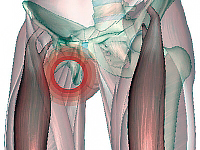 In diagnostic studies, it is important to establish the main disease, since when inflammation of the whole group of nodes, it makes no sense to treat only them without identifying the cause of pathology and a comprehensive approach to treatment.
In diagnostic studies, it is important to establish the main disease, since when inflammation of the whole group of nodes, it makes no sense to treat only them without identifying the cause of pathology and a comprehensive approach to treatment.
At the initial stage, the use of antibiotics, braking the inflammatory process. Amoxiclav, Amoxicillin, Ampicillin, Ceftazidim, Flexin and Ceftzidim. Antibiotics therapy is carried out within 10-14 days and usually helps to stop the inflammatory process. In parallel, the main disease is treated. In the case of fitting of lymph nodes, operational intervention is possible.


